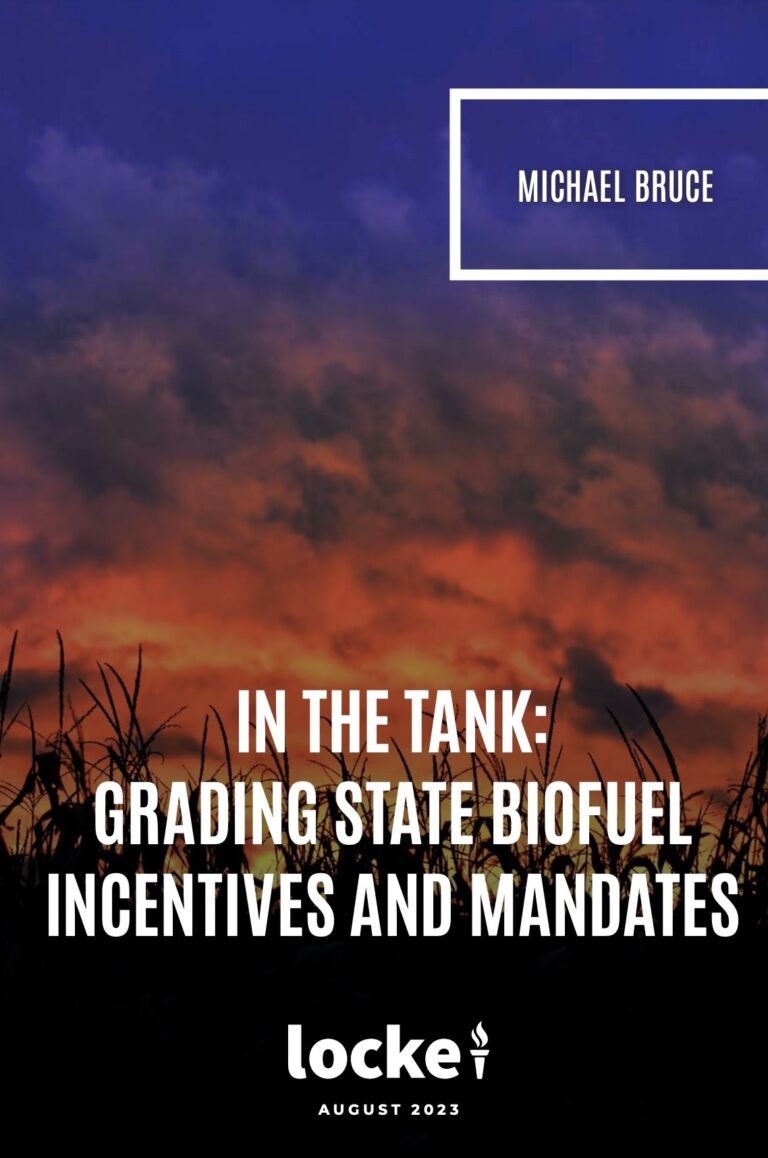The increased interest in renewable energy has led to the implementation of biofuel incentives and mandates by many state governments in the United States. Production of biofuels using edible crops, however, has resulted in higher food prices, impacting low-income households and food-insecure populations.
The market distortions from these mandates and incentives artificially constrain food supplies by reallocating edible crops — especially such staples as corn, wheat, and soybeans — to power civilian and government vehicles. Nearly half of the soybeans (46 percent) and corn (45 percent) produced in the United States are used for biofuels. This paper aims to discuss the negative impacts of using edible crops for fuel and question the role of state government policies in this matter.
Biofuel incentives and mandates are driven by the belief that transitioning to biofuels can reduce greenhouse gas emissions and promote rural development. Nevertheless, diverting crops to biofuel production can conflict with food production, leading to social conflicts and environmental degradation. The demand for biofuels increases the demand for crops, resulting in higher prices, reduced affordability for low-income consumers, and food insecurity. Also, because the crops primarily used for biofuels are staple food crops, biofuel production further reduces the supply of these crops available for food production and exacerbates food price increases.
Incentives result in several negative unintended consequences, including distorting market prices, misallocating resources, making inefficient use of taxpayer money, and creating dependency on government. Mandates create economic inefficiencies by forbidding or penalizing certain economic choices, increasing regulatory compliance costs, restricting consumer choice, reducing competition, and driving up the prices of the remaining options.
This paper provides a report card examining the biofuel incentives and mandates of all 50 states and the District of Columbia. The scoring and grading are based on the number and extent of these state government interventions. They include grants, subsidies, tax incentives, loans, rebates, purchase mandates, fuel blend or use mandates, mandates on government agencies, and so on. The more interventions a state employs, the higher its score — and the lower its grade.
North Carolina tied with Kansas for fourth-worst among the states and worst among Southeastern states. Only three states had worse scores than North Carolina. With a grade of D-, North Carolina combined a higher-than-average amount of incentives for biofuel production and consumption with a higher-than average number of mandates. Among them are three different funds for alternative fuels and alternative fuel vehicles (AFVs) and four mandates concerning AFV purchases by state government agencies and school boards, as well as some exemptions favoring alternative fuels and an ethanol blend mandate.
For North Carolina policymakers, this paper makes the following recommendations:
- Eliminate the grants and special funding for alternative fuels and AFVs
- Remove mandates on government vehicles
- Avoid imposing more government favoritism of biofuels
Overall, this paper highlights the detrimental effects of biofuel incentives and mandates on food prices, particularly for low-income households. It emphasizes the need for a more careful approach by state policymakers that considers the potential negative consequences of these interventions on food prices, food security, and the overall economy.



